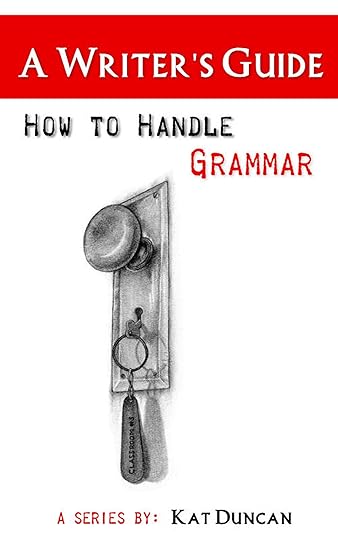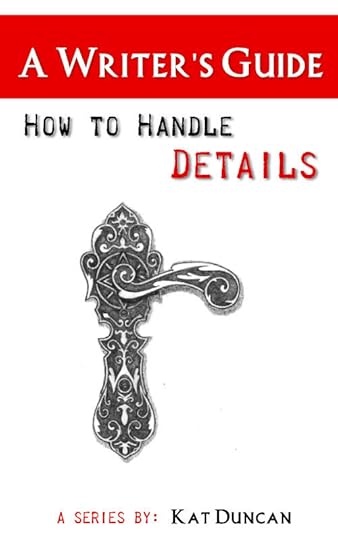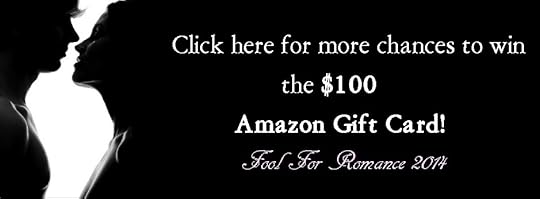Kat Duncan's Blog, page 9
October 2, 2015
Guest Victoria Marshal
June 6, 2014
New Place in Cyberspace
Check out my new website launch:
I'm also blogging over at:
May 14, 2014
Book 4 of A Writer's Guide series
Kat's writing series, Book 4 is out now:
Story structure is not usually one of the first issues new writers worry about. First stories often already have beginnings, middles and ends. What more do you need? As new writers begin the process of revision, they will often notice that other writers are asking one another, "What plotting method do you use?" There are plotting methods? "What's your story's premise?" What's a premise? Soon after this the budding writer realizes there is a whole world of information about how to go about crafting a story. This book aims to give you an overview of some of those methods and ideas along with some techniques to help bring you up to speed quickly and with luck, painlessly. This is not a comprehensive text on how to write creative fiction. It contains only those methods I have come across and tried out for myself. In it you will find a discussion of ways to describe your book, figure out what genre your book fits, help with choosing points of view, subplots and sagging middles. I hope you can use this information to guide your journey through the maze of possible ways to write fiction.
You can find the first three of these on Amazon:
How to Handle Conflict and Tension
April 3, 2014
Latest Release for Writers

My Newest Release for Writers, Book #2 in my Series for Writers,
How to Handle Grammar is about to launch on Amazon.
Watch for it!
And to celebrate, on April 5th, 6th and 7th, Book #1 in the series
How to Handle Details will be FREE on Amazon:
Also, check out My Next Workshop Coming up!
Get Grammar and Style with Savvy Authors
Start Date April 7 - Register here!
What's a style or a voice and where do I get one? Whether you "get" grammar or not, your style and voice come from how you use grammar. This grammar-based style-enhancing workshop is for writers who don't "get" grammar or for those who think they don't want to get it. Proper use of grammar and style makes a story flow smoothly, page after page. Poorly constructed sentences and paragraphs ruin the pace of your novel and make editors and agents pass up your manuscript. Let me guide you through a review of basic grammar terms, punctuation and capitalization and show you sentence pattern techniques you can put right to use the day you learn them.
Looking for ways to improve your style without losing your unique voice? This style-enhancing workshop is for writers who want to learn more ways to show off their style. Proper use of complex grammar constructions such as phrases and clauses can pack a wallop of tension, emotion or information without knocking the reader out of the story. Poorly constructed sentences and paragraphs can slow down or confuse readers. Let me guide you through higher level grammar constructions including phrases, clauses, auxiliary verbs, and sentence modifiers, and show you the related sentence pattern techniques so you can put them right to use. Includes a review of "no nos" such as run-on sentences and misplaced modifiers.
Take charge of your style and make your voice shout! This workshop is for writers who want to learn advanced grammar and style techniques to use in developing their unique style. Lectures will post on Mondays, Wednesdays and Fridays to guide you through higher level grammar concepts including parallel structures, the use of subtext, colloquial and vernacular phrases, and idioms. Includes practice with complex grammatical "no nos" such as adjective-adverb errors, idiom and coordination errors. Explores a variety of style choices such as head-hopping, talking heads in dialogue, showing versus telling, slipping into omniscient point-of-view, revealing too much and too little information, and examines the pros and cons of each.
February 28, 2014
Fool For Romance 2014
Welcome to the Fool for Romance 2014 Contest!
Comment on this blog post to be in the running to win a signed print copy of Ali's Victory. Your comment also puts you in the running for a $100 Amazon Gift Card! Click the Fool for Romance 2014 badge at the bottom of the blog for more chances to win!
The contest runs from 3/1/14 through 3/31/14
February 6, 2014
Writer's Guide Series Preview
I'm so excited! Here's a preview of my new book series for writers. All books are based on my popular workshops with additional information and exercises for you to try on your own. Now you'll have access to all my hints, tips, tricks and explanations to do your best writing ever! Here's what the new series covers will look like:

I'm planning to add more titles this year. 13 in all! Topics such as characters, conflict, emotion, dialogue, hooks and more! Watch for the release of the first book in the series, How to Handle Details, coming soon!
In the meanwhile, check out my latest upcoming workshop over at Savvy Authors:
Workshop starting February 10, 2014
Write What You Know - Building Around Your Strengths with Coach Kat Duncan
Feb 10 - Mar 9, 2014
Where: The Savvy Forums
Cost: Premium Members $20 / Basic Members $30
You've heard the old adage "write what you know", but how do you know if what you know is useful for your writing? If you are a brand new writer, or if you are starting a new novel, Kat can help you pull out every personal tool you have that can be used in your writing. Learn specific ways to discover what you are most likely to write about and why.
December 19, 2013
New Group Blog
Hey all! Take a look at this new blog I'm participating in The Story Grannies:
http://storygrannies.blogspot.com/
It's a place to learn from the old ladies, get insights, wisdom and free advice! :)
October 15, 2013
Points on Point-of-View
Most complaints of head hopping happen because the reader is pulled out of the story. If you can be more subtle about it, then it's not a problem. New writers often head-hop without realizing it and once they understand what it is, they can work to avoid it. An example of blatant head hopping would be:
Anticipating a kiss, Jane sighed and looked up into Joe's handsome face. He'd never seen a more beautiful smile in his life.
In the first sentence we are clearly in Jane's POV as she sighs and admires Joe's handsome face while anticipating their kiss. In the second sentence we have head-hopped to Joe who is, in turn, admiring Jane's smile.
A possible fix:
Joe took Jane into his arms. Anticipating his kiss, Jane sighed and looked up into Joe's face. He'd never seen a more beautiful smile in his life.
These small changes (above) have muddied the waters for that (now second) sentence. This could all be in Joe's POV. If we do a solid job of keeping the scene in Joe's POV, then we have achieved limited 3rd POV. That is, Joe is telling us the story and along with that we are getting his thoughts and feelings. What we know about the other characters is "limited" to what Joe can "read" from their body language, hear in their words, or find as far as facts.
Joe can also interpret those facts for us in subjective or objective ways. For example, he could say, "Jane seemed relaxed and comfortable." (objective observation), or "Jane was relaxed and comfortable." (subjective opinion). If Joe's limited 3rd POV becomes too subjective, it may seem as if he actually knows what's in Jane's head, which morphs us into the omniscient 3rd POV. By the same token, if Joe's limited 3rd POV becomes too objective, it may seem as if he's distancing himself (and the reader) from the intimacy of his narration, which also morphs us into the omniscient 3rd POV.
The differences are subtle and often interpreted differently by different readers. Generally, if a writer starts out with the intention of using omniscient 3rd, the narration is more objective and more psychologically distant (i.e. light on the deep inner thoughts and emotions).
August 31, 2013
Characterization and Dialogue Basics
Register Now for Kat's month-long workshop on dialogue... September 2013 with Colorado Romance Writers - Registration link
Characterization and Dialogue Basics
Characterization is the collection of techniques a writer uses to reveal the personality and conflicts of characters to the reader. It involves words, thoughts, appearances and actions in complex ways. In today's modern novels dialogue is critically important. Many successful mainstream and genre novels have an increasing amount of dialogue over narration, forcing dialogue sequences to do all the work of revealing important information about characters.
Dialogue may look like conversation between characters, but it is not. In fiction there is no such thing as casual conversation between characters. Everything they say should reveal character traits or story secrets, or build tension. Dialogue should not try to copy actual conversation, but rather distill it into only the most essential elements needed for the reader's entertainment. In short, it should do some work. Using dialogue instead of narration makes it easier for readers to understand what's going on. We humans are primed to understand spoken interaction. Written explanations take longer for us to process and don't include the hints of tone of voice, or the subtleties of attitude and purpose that we can grasp from someone's spoken words.
But before we writers can make dialogue do all that work, we have to understand what it's made of.
Anatomy of dialogue
Dialogue consists of two essential elements, words and utterances in quotation marks which are the actual words or sounds spoken by the character, and punctuation.
"You're not going to college so your mama's friends don't have to use the same bathroom as the maid."
-The Help, Kathryn Stockett
Dialogue may also have a few optional elements, such as dialogue speech tags, action tags, descriptive tags, and additional punctuation that is not in quotes. In addition, dialogue may be surrounded by and embedded in prose, and could have additional punctuation or italicization to indicate emphasis.
"Nothing," I said. "They weren't there to be seen. That's my point. We should have seen certain things, but we didn't. Because certain things were missing."
The Affair, Lee Child.
"Yessuh," I say, feeling my dread erase any relief I had coming to me today.
-The Help, Kathryn Stockett
Grammatical Details for Dialogue
Use punctuation to separate what is said with the tag line that shows who said it.
"I can't find my diary," said Josephine.
The teacher said, "Everyone take out his homework."
Spoken questions keep their question marks, as do sentences with exclamation marks.
"Does anyone have an aspirin?" asked Suzette.
"Don't you dare speak to me that way!" shouted Karenna.
Irritated with the wait, he demanded, "Can't you call ahead next time?"
From the base of the stairs Jocasta hollered, "Mom, the contractor is here!"
For tags that break up two complete sentences, attach the tag to one or the other.
"It's heartless to string him along that way," he said. "You should tell him it's over."
"I hate this weather." Penelope whispered, "I want the sun to come out."
For tags that break up a single sentence, set the tag off with commas.
"When you get to the station," said Herschel in a low tone, "take the last outbound train on track ten."
For two pieces of speech separated by a sentence with action or description, use regular sentence punctuation.
"Hang on, Donna. The cat needs to go outside." Alberto put down the phone. "I'm coming, Frisky, you rascal. Stop scratching at the door."
For a complete (and funny) outline of using punctuation with quotes, try this source:
http://www.writingfix.com/PDFs/Writing_Tools/Tom_Swiftie_Dialogue_rules.pdf
Other Notes on Dialogue Grammar
Use an emdash (–) when a character's speech is suddenly interrupted or cut off.
Example: "Wait, my legs or my ank–" -The Help, Kathryn Stockett
Use an ellipsis (...) when a character's speech is temporarily interrupted, paused, or fades away. Example:
"You're...different. I've never met anybody that said exactly what they were thinking. Not a woman, anyway." -The Help, Kathryn Stockett
"Constantine..." I cry. I wish I'd known.
-The Help, Kathryn Stockett
Begin a new paragraph each time there is a new speaker.
"Hop on my bike and I'll take you down to the store," said Peter.
"Thanks, but I think I'll walk," said Jill.
Put the action of the speaker in the same paragraph as his/her speech.
"Come on," he said, showing her the comfortable seat of his new motorcycle. "I promise not to drive too fast." He straddled the bike and offered her the spare helmet.
For long speeches with multiple paragraphs, do not use a closing quote at the end of the paragraph, but do use a begin quote at the beginning of the new paragraph. This is pretty rare, but if you've got a character who makes long speeches it's worth knowing.
"For once in my life I'd like to be allowed to make my own decisions. Is that too much to ask? How many times have you told me I need to grow up and fend for myself, huh? Millions, right? And every time I stretch out just a bit. Every time I reach for something that's a little beyond the comforts of home, you slap me back down to Earth, telling me exactly how to do this and when to do that. You give me no room to grow. No room to make mistakes.
"Does that make sense? It doesn't really make sense. It's contradictory, in fact. Well, I've had it. I'm fed up. I'm outta here." Jennie slammed the door behind her dumbfounded parents and tromped down the front steps and out into the real world.
For a quote within a quote, use a single quote within a double quote. Example:
"No, you didn't say that at all. You said 'one month from today' which was exactly thirty days ago."
Note: In the US, Canada and Australia/NZ double quotes are used for most dialogue with single quotes for emphasis or embedded quotes. In the UK, it can be the reverse, depending on the publisher.
Exercise: Evaluate the following two dialogue pieces. What do you like about each one? What frustrates or annoys you? Note: there's no right or wrong here. This exercise is designed to help you become aware of your preferences in reading dialogue because your writing preferences most likely follow your reading preferences. I've commented on the first one so you can get a sense of how to respond.
Dialogue #1:
"What's going on, Cat?" Chase bellowed. "Have the townies gotten so fat they need two horses to carry each of them?"
"Hush, I don't want any trouble," she said, with a pointed glance at his writhing bag. "I'll stable Salty at the Watering Hole."
"Strom may let you stable him there, but certainly not for free. Where does it stop, Cat? How much abuse do they think we'll tolerate?" he asked, sounding more incensed with each word.
"I don't have time for this now. I'll see you at the lesson," she said, turning Salty.
-Call of the Herald, Brian Rathbone
(Kat's comments: I like the tension between the characters. I like the "townies" and the little jibe that make the Chase character feel familiar, like guys I know who would talk this way. So many names all at once is confusing: Cat, Chase, Salty, Strom. In this short sequence I had trouble keeping them straight.) Okay, now your turn. What do you think about this one and the next one?
Dialogue #2:
"You're awfully quiet," Matt said.
"Did I mention that I don't have a good feeling about this?"
"Uh, huh." Matt tightened his collar against the autumn chill and worked a piece of gum with his jaw. "That's your theme song."
"Really? Don't you ever get a bad feeling about a call?"
"All the time."
"How come you never tell me?"
"I'm going to feed the flames of paranoia?"
- A Touch of Deceit, Gary Ponzo
August 7, 2013
Get Some SASS
The Savvy Authors Summer Symposium (SASS) registrations are in full swing. Don't miss this line-up of amazing participants!
From August 21, 2013 to August 25, 2013 it's the online writer's conference for those of us who are vacationing at home! :)
Check out the event here: Savvy Authors Summer Symposium. From this page you can review the Chats, Pitches, Workshops, Prizes, and also Register for SASS! Soon you'll see the Brainstorming Sessions and Sprints, as well as a Printable Event Schedule.
SASS is FREE to Premium Savvy Authors members, or $30 for Savvy Basic members (or non-members!). Note that a one-year Premium membership costs $30, and we hold multiple events every year for our Savvy Authors Premium members. Newbies can sign up for Premium membership and attend SASS for free!
You will receive a full year Premium Membership as part of your participation in SASS. New to Savvy Authors? Join here as a basic member. I will ensure you're upgraded appropriately prior to the start of the event. If you're an existing member and haven't yet visited our sparkly new site, you'll need to reset your password using your existing email address.





